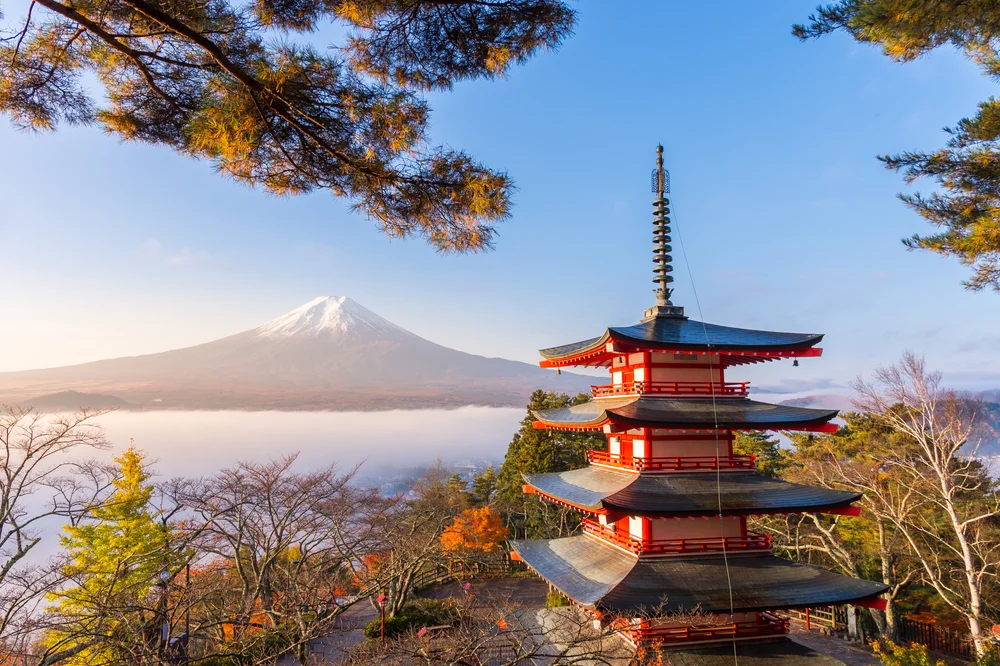Visiting Northern Japan Comprehensive Travel Guide
For those wishing to discover amazing scenery, distinctive cultural encounters, and mouthwatering local cuisine, visiting Northern Japan is an unforgettable trip. Northern Japan is a secret treasure full of natural beauties, historic customs, and quiet rural villages, even if many visitors visit Tokyo, Kyoto, and Osaka.
To help you arrange an amazing trip to visit Northern Japan, this guide offers a thorough look at the top sites to visit, interesting activities, must-try dishes, and sensible travel advice.
Understanding Northern Japan
Geography & Climate
There are two main divisions to Northern Japan:
- Tohoku: The northern portion of Honshu Island is noted for its mountains, old towns, onsen (hot springs).
- Hokkaido:Famously for its natural beauty, winter sports, and wildlife, Hokkaido is the northernmost island in Japan.
Every season in Northern Japan presents special opportunities:
- Spring (March–May): moderate weather and late cherry blooms.
- Summer (June–August): summer (June–August) ideal for outdoor pursuits.
- Autumn (September–November): brings breathtaking mountain and forest colors.
- Winter (December–February): heaven for hot spring bathing and skiing because of the lot of snowfall.

Cultural Significance
Deep cultural origins abound in Northern Japan from:
- Ainu Culture: Rich in music and crafts, the Hokkaido indigenous people
- Samurai Heritage: Tohoku is home to preserved samurai districts, such as Kakunodate in Akita.
- Festivals: Celebrated events include the Sapporo Snow Festival in Hokkaido and the Nebuta Festival in Aomori.
Best Time to Visit
- Cherry Blossom Season: April–May (Tohoku & Hokkaido)
- Best for Outdoor Activities: June–August
- For Autumn Foliage: September–November
- Winter Sports & Festivals: December–February
Exploring the Tohoku Region
Natural beauties abound in Tohoku, along with rich customs and historical towns.
Must-Visit Destinations
Aomori
- Nebuta Festival: The most well-known summer celebration in Aomori involving massive illuminated floats is the Nebuta Festival.
- Hirosaki Castle: Stunning in cherry blossom season is Hirosaki Castle.
- Shirakami-Sanchi: Perfect for hiking is the UNESCO World Heritage beech woodland Shirakami-Sanchi.
Akita
- Kakunodate Samurai District: Preserved samurai homes and museums under Akita Kakunodate Samurai District.
- Nyuto Onsen: Nyuto Onsen is a secret hot spring community featuring ryokans in traditional style.
- Akita Kanto Festival: Participants in this evening celebration balance long poles with lanterns.
Iwate
- Hiraizumi: The ancient village of Iwate Hiraizumi boasts a UNESCO site—the Chusonji Temple.
- Geibikei Gorge: A lovely boat trip across caverns and cliffs.
- Sanriku Coast: Hidden beaches and seafood stores along a stunning shoreline.
Miyagi
- Matsushima Bay: Featuring small islands surrounded by pine trees, Matsushima Bay is among the most picturesque locations in Japan.
- Zao Fox Village: Visitors of Zao Fox Village, a wildlife refuge, may view more than 100 free-roaming foxes.
- Sendai: Tohoku’s largest city, Sendai boasts excellent cuisine, retail, and historical landmarks, including Zuihoden Mausoleum.
Yamagata
- Yamadera Temple: Zao Onsen is a hot spring resort noted for winter skiing and snow monsters.
- Zao Onsen: A hot spring resort famous for winter skiing and snow monsters.
Fukushima
- Ouchi-juku is a well-preserved post town featuring Edo-period architecture.
- Created by volcanic activity, a sequence of stunning blue and green lakes known as Goshikinuma Ponds
- Tsuruga Castle in the old samurai town of Aizu-Wakamatsu.
Unique Activities & Experiences
- Hiking:Popular trails include Oirase Gorge and Towada-Hachimantai National Park.
- Onsen: Calm yourself at Ginzan, Nyuto, and Zao Onsen.
- Winter Sports:Appi Kogen or Zao Ski Resort skiing.
- Traditional Festivals:Celebrate the Aomori Nebuta Festival and Akita Kanto Festival in old ways.
Regional Food & Drinks
- Kiritanpo:Kiritanpo is a specialty of Akita.
- Wanko Soba: Iwate’s all-you-can-eat challenge soba.
- Fresh Seafood:Fresh seafood includes Miyagi oysters and Aomori tuna.
- Local Sake: The production of sake is well-known in Yamagata and Akita.

Discovering the Hokkaido Region
Japan’s wild frontier, Hokkaido, presents breathtaking scenery and outdoor pursuits.
Top Attractions
Sapporo:With its breathtaking winter shows, the Sapporo Snow Festival features massive ice sculptures that draw guests from all around. Discover the background of Japan’s well-known Sapporo Beer and have a sampling session at the Sapporo Beer Museum.
Hakodate:With glittering city lights reaching the horizon, Mount Hakodate presents one of the most amazing night vistas available in Japan. Hakodate Morning Market, just a short distance away, is a seafood lover’s paradise, offering fresh uni (sea urchin) and ikura (salmon roe), among other regional specialties.
Otaru: Otaru Canal is a picturesque historic district lined with old warehouses that have been transformed into cafes, museums, and shops, creating a nostalgic atmosphere. The city is also famous for its exquisite glassware, with numerous shops and workshops showcasing beautifully crafted glass souvenirs and ornaments.
Asahikawa: Among the most well-known zoos in Japan, Asahiyama Zoo boasts distinctive cages that let guests view animals up close in their natural habitats. Perfect for those who enjoy the natural surroundings, Daisetsuzan National Park has amazing hiking paths and an abundance of species nearby.
Outdoor Adventures: Northern Japan offers incredible outdoor adventures, from wildlife watching where you can spot brown bears and red-crowned cranes to hiking in Daisetsuzan National Park, known for its stunning trails and untouched nature. During winter, skiing and snowboarding enthusiasts can enjoy world-class slopes in Niseko and Furano Ski Resorts. After a day of adventure, relax in the soothing hot springs of Noboribetsu Onsen, famous for its mineral-rich waters and scenic surroundings.
Famous Local Dishes: Rich, miso-based ramen from Hokkaido is well-known for its deep, savory taste, ideal for chilly seasons. Another must-try meal is Jingisukan, a tasty BBQ created from roasted lamb. Fresh crab, scallops, and sea urchin—harvested from Hokkaido’s immaculate waters—are available to seafood aficioners. Excellent dairy products include creamy milk, luscious cheese, and mouthwatering ice cream, which abound in this area as well.
Practical Travel Tips
Transportation & Getting Around
For convenient travel in Northern Japan, consider using the Japan Rail Pass, such as the JR East or JR Hokkaido Pass, for unlimited train rides. Local buses and trains are a reliable option for exploring smaller towns, while rental cars provide flexibility for remote areas. If you’re traveling from Tokyo to Hokkaido, domestic flights offer the fastest and most efficient way to reach your destination.
Where to Stay
- Ryokan: Authentic Japanese stays.
- Hotels: Budget-friendly options.
- Minshuku: A cozy homestay experience.
Budget-Friendly Travel Tips
- Get a rail pass to save money.
- Stay in hostels or capsule hotels.
- Eat at local markets for affordable meals.

Conclusion
Visiting Northern Japan is an adventure filled with scenic landscapes, rich traditions, and delicious food. Whether you’re hiking in Tohoku or skiing in Hokkaido, this region offers something for every traveler.
Start planning your Northern Japan trip today! Share this guide with fellow travelers and comment below on your dream destinations!



